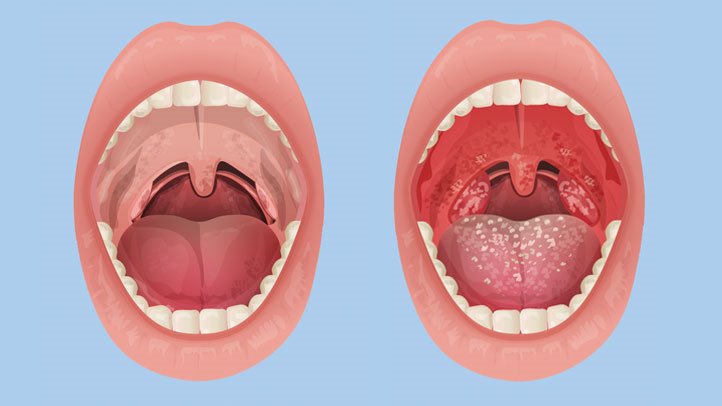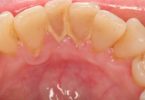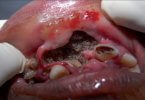What's in this article?
What is tonsillitis?
Tonsillitis is an inflammation of the tonsils. The tonsils are a pair of soft tissue masses located at the back of the mouth, with one on each side of the throat. The tonsils are glands that form part of the immune system, and thus function to prevent infection from potential bacterial or viral organisms that enter through the mouth and nose. However, sometimes the tonsils themselves can become infected, leading to swelling and inflammation of this tissue. Tonsillitis may be caused by either viruses or bacteria, although most cases are viral in origin and therefore resolve without the need for antibiotics. Acute tonsillitis usually resolves within 7-10 days. However, some individuals with chronic tonsillitis may suffer from recurrent or continuous symptoms of tonsillitis. Tonsillitis is most common in children and teenagers, although adults of any age can develop tonsillitis.
Causes and Symptoms of tonsillitis
Bacterial and viral infections can cause tonsillitis. A common cause is Streptococcus (strep) bacteria. Other common causes include:
- Adenoviruses
- Influenza virus
- Epstein-Barr virus
- Parainfluenza viruses
- Enteroviruses
- Herpes simplex virus
The main symptoms of tonsillitis are inflammation and swelling of the tonsils, sometimes severe enough to block the airways. Other symptoms include:
- Throat pain or tenderness
- Redness of the tonsils
- A white or yellow coating on the tonsils
- Painful blisters or ulcers on the throat
- Headache
- Loss of appetite
- Ear pain
- Difficulty swallowing or breathing through the mouth
- Swollen glands in the neck or jaw area
- Fever, chills
- Bad breath
In children, symptoms may also include:
- Nausea
- Vomiting
- Abdominal pain
How tonsillitis is diagnosed
Diagnosis is based on a physical examination of your throat. Your doctor may also take a throat culture by gently swabbing the back of your throat. The culture will be sent to a laboratory to identify the cause of your throat infection.
Treatment of tonsillitis
The first line of tonsillitis care can be conducted at home, and if the infection is viral rather than bacterial, antibiotics will not be prescribed.
Basic treatments
These are the simplest tactics to reduce suffering at home:
- Rest – during rest, your body can focus its energy on fighting the infection rather than expending it on daily activities.
- Fluids – fluids prevent the throat from drying out and becoming more uncomfortable, warm liquids (preferably caffeine-free) can also soothe. When the body is fighting an infection, it needs more hydration than normal.
- Saltwater – a saltwater gargle might help with discomfort.
- Humidify – air humidifiers or sitting in a steamy bathroom can remove the irritation of dry air.
- Avoid irritants – no smoking, avoid smoky locations.
- Medication – pain and fever can be treated with ibuprofen or acetaminophen.
Antibiotics
If bacterial infection has caused the tonsillitis, antibiotics are often prescribed. Penicillin is most commonly used. The full course of antibiotics must be taken, whether symptoms are relieved or not. Failure to do so might allow the infection to spread and has the potential to cause rheumatic fever or kidney inflammation in the long term.
Surgery
Surgery used to be a relatively common approach to dealing with tonsillitis. Nowadays, tonsillectomies are not used unless it is chronic and recurring.
For instance, seven occurrences within a single year, or three per year for 3 years in a row would warrant the consideration of surgery.
Although the tonsils are increasingly less active following puberty, they are still an active organ and therefore not removed unless entirely necessary.
However, a tonsillectomy might be called upon if the tonsils are causing secondary issues such as sleep apnea, difficulty in breathing or swallowing, or an abscess that is difficult to treat.
If a tonsillectomy is deemed necessary, there are a variety of methods that can be applied. Lasers, radio waves, ultrasonic energy, coblation (cold temperatures), or electrocautery (a needle heated by electricity) have all been successfully used to remove the tonsils.
Increasingly, surgery has become the last port of call. The negative implications of surgery are considered to outweigh the positives associated with the removal of the tonsils.
In general, although distressing and uncomfortable at the time, tonsillitis will pass, for the vast majority of patients, without any serious long-term implications.






Leave a Comment